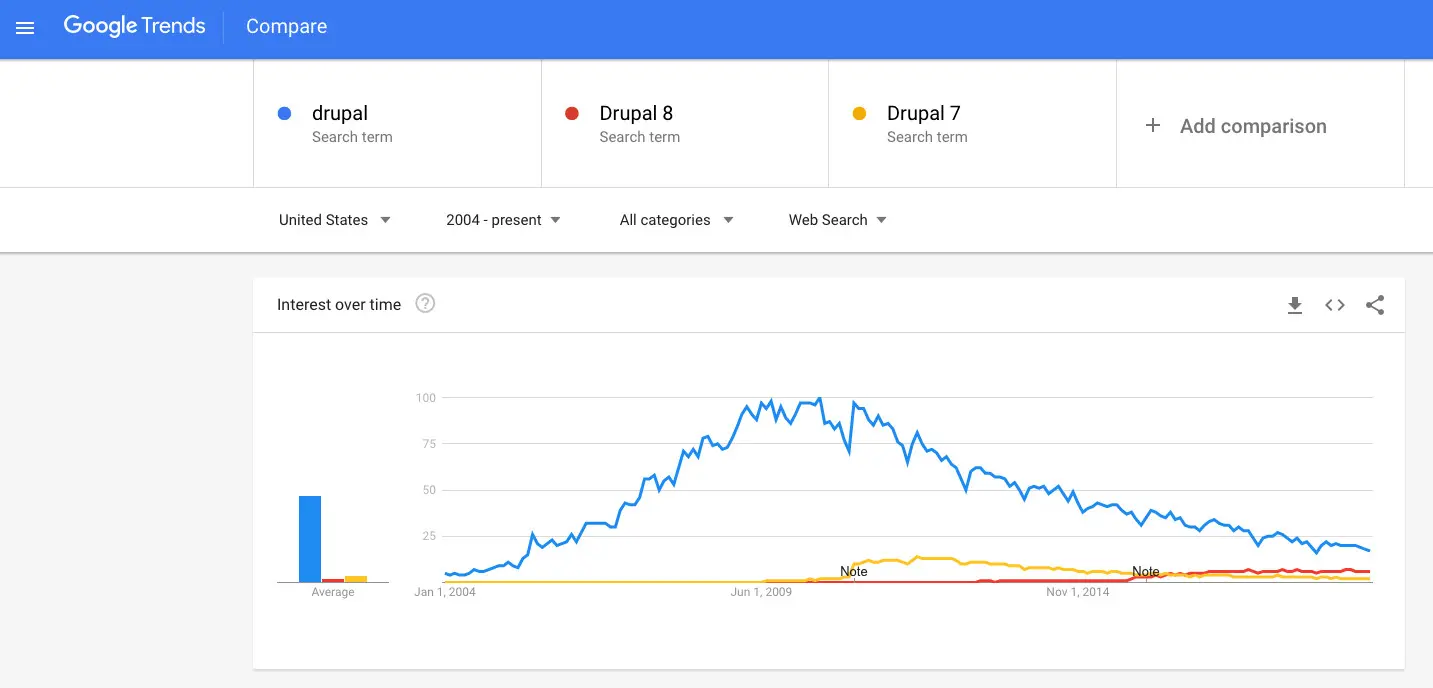Acquia’s $1 Billion Acquisition: Is Drupal Now the Next WeWork?

Mike Vertal

It was recently announced that Acquia was acquired by Vista Equity Partners for over $1 Billion. The SaaS company provides enterprise support and services for the open-source Drupal platform.
This acquisition has sparked a lot of fervor around Acquia and Drupal being well-positioned for delivering digital experiences, but is this actually the case? We think not. For one, this acquisition was a result of Acquia’s failed IPO plans, which certainly was Acquia’s original venture capital investors’ primary objective. Having apparently failed to achieve the size and growth rate necessary for a successful IPO, a private equity sale was the next best option. But this is just the tip of the iceberg of Acquia’s troubles.
The Problems With Drupal
We’ve covered a number of Drupal Pain Points in the past, but let’s dive deeper into why Acquia isn’t well positioned for the seismic shift occurring right now in the development and delivery of modern digital experiences.
PHP is clunky
The PHP language itself is very clunky and has legacy holdouts from its origin as a templating language. That’s because PHP eventually evolved to adopt functional programming and later object-oriented capabilities, often breaking backward compatibility along the way. And these poor language design choices have made their way into Drupal as well as other popular PHP frameworks like Laravel and Symfony.
Drupal’s biggest innovation the last five years was the move to object-oriented PHP in Drupal 8. Yawwwn. At the same time, Drupal 8 broke pretty much all existing installations and community plugins, forcing re-writes and costly upgrades. Indeed, Drupal 8 has taken over three years to reach any significant level of adoption. A large Drupal 7 population still remains (see https://www.drupal.org/project/usage/drupal) and they are all facing end-of-life support with few options but to perform a painful upgrade to Drupal 8 (or 9), or look for an alternative, more modern solution.
Themes and extensions are dead
While themes and extensions were once a great feature for traditional CMS solutions, they’ve gone out of style. User-developed functionality like these vary too much in quality, and they bring considerable security risks. They also cause challenges for complying with web accessibility standards. Drupal, however, relies heavily on modules, extensions, and themes — and that’s not likely to change anytime soon.
Innovative CMS vendors, on the other hand, are moving away from user-driven themes and extensions, and instead empowering developers with headless 3.0 support to create high-quality front-ends using modern frameworks. REST APIs, GraphQL, and other development tools obviate the need for themes and extensions these days. Following the proven model of the Apple Store and Google Play, curated application marketplaces are the future of successful CMS platforms and communities.
DevOps matters more
Digital application development is moving faster than ever before. Development teams need the ability to quickly build and deploy content-driven applications for a multitude of touchpoints and channels. Companies need the ability to quickly move code and content between environments without system or authoring downtime.
With Drupal, however, digital adaptability isn’t a guarantee. Legacy applications built atop SQL databases hinder development speed and agility. With so many modules and other custom code of varying quality, it’s challenging to implement a streamlined DevOps process to test code and move it to upper environments efficiently. The platform is too bloated to fit in with an agile software development methodology at a time when DevOps is crucial for delivering digital experiences.
It’s Time To Ditch Drupal
Acquia and Vista Equity Partners may be optimistic about Drupal’s future, but there’s no question the platform is fighting a losing battle. Drupal is doing what it can to upgrade its architecture and core technologies — as evident with the dramatic shift in its underlying framework — but it’s still struggling to keep up with modern CMS solutions. However, there’s no denying that Drupal is past its prime, as evidenced in the Google Trends chart below.

Vista Equity Partners likely overpaid for Acquia. It wouldn’t be the first time a private equity overvalued a technology company. Softbank’s overvaluation of WeWork is the most recent and largest ever, but there’s plenty of other examples.
CrafterCMS, a Modern Alternative to Drupal
CrafterCMS, an open source, headless git-based CMS, was developed from the ground up with the future in mind. That means a microservices architecture built with Java, lightweight serverless deployments, and API-first content delivery.
Where CrafterCMS stands out the most is that it enables a DevContentOps approach for developing and maintaining content-driven applications and digital experiences. This way content authors, software developers and IT operations can easily collaborate, and integrate content, code, and configuration into a CI/CD pipeline. Taking DevOps one step further, DevContentOps adds the ability of Continuous Publishing to the equation, enabling a comprehensive CI/CD/CP process for content-rich software applications and products. Good luck integrating Drupal with its SQL database, bloated architecture, modules, and themes into a streamlined DevOps process.
When it comes down to it, you can’t believe the hype that Drupal is well-positioned for delivering modern digital experiences. The platform is just barely hanging on. Instead, choose a modern CMS solution that’s already looking towards the future.
Related Posts

How Should You Structure a Blog Post So AI Models Actually Cite It?

Amanda Jones

Publishing Content from Crafter Studio to External Systems and Databases

Sara Williams

Websites Are Dead?

Mike Vertal

No-Code Experience Building for Marketers & Designers

Amanda Lee










